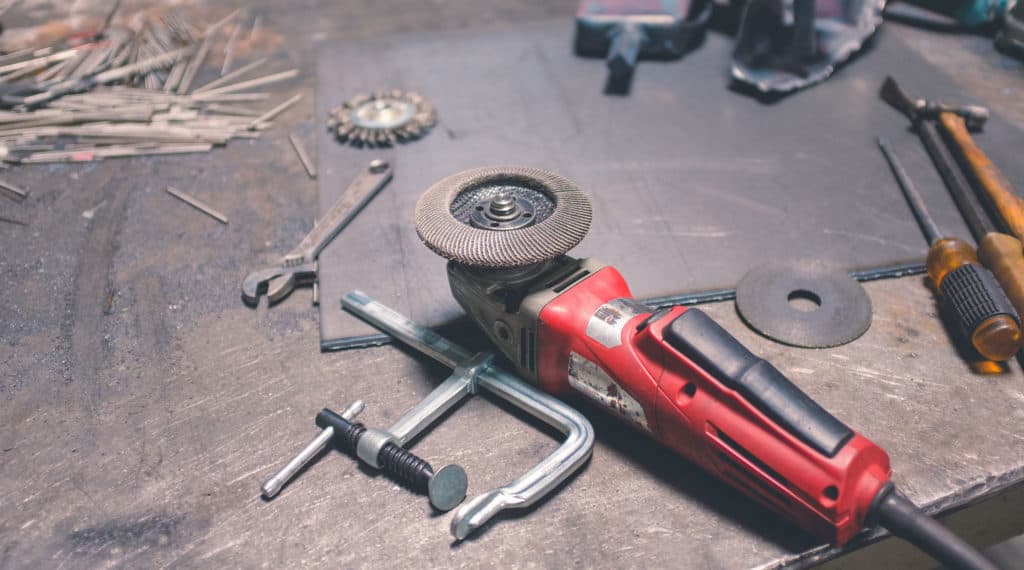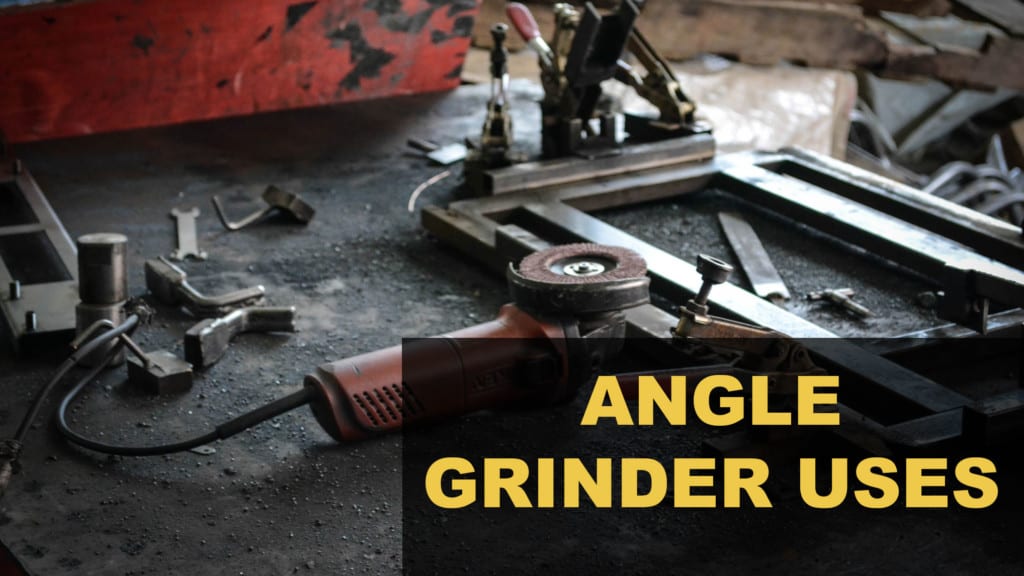Do you know what an angle grinder is? It’s one of my favorite power tools, and I think it’s super versatile! In this article, I’ll share some of the many angle grinder uses. So, let’s jump right in and explore this amazing tool together!
What is an Angle Grinder?
An angle grinder, also known as a side grinder or disc grinder, is a handheld power tool with a spinning abrasive disc. The disc can be made of various materials, like sandpaper or a diamond blade, depending on the task. You can use an angle grinder for grinding, cutting, polishing, and sanding various materials.
The Main Parts of an Angle Grinder
Before we dive into the different uses, let’s take a look at the main parts of an angle grinder:
- Motor: The motor is what powers the angle grinder. It can be electric, battery-operated, or even pneumatic (air-powered).
- Gearbox: The gearbox is what transfers power from the motor to the spinning disc.
- Disc: The disc is the part that does the work. It can be made of different materials and comes in various sizes, depending on what you need it for.
- Guard: The guard is a protective cover that helps keep you safe while using the angle grinder. It can usually be adjusted to different positions.
- Handle: The handle is where you hold the angle grinder. Some models have an additional handle that you can attach for better control and stability.
Angle Grinder Uses
Cutting Materials
One of the most common uses for an angle grinder is cutting materials. I’ve used mine to cut through all sorts of things, like metal, tile, and even concrete! Here’s how you can use an angle grinder for cutting:
- Metal: To cut metal, you’ll need a metal cutting disc. Just attach the disc to the angle grinder, turn it on, and carefully guide it through the metal. Be sure to wear safety gear and watch out for sparks!
- Tile: Cutting tile is easy with a diamond cutting disc. Mark the cut line on the tile, turn on the angle grinder, and gently push it along the line. Remember to go slow and steady.
- Concrete: For cutting concrete, you’ll need a diamond blade. Start by scoring the concrete with the blade, and then gradually deepen the cut until you’ve gone through the entire thickness.

Grinding and Sanding
Another great use for an angle grinder is grinding and sanding. You can use it to remove rust, smooth out rough edges, or even shape wood. Here’s how:
- Removing Rust: To remove rust from metal, attach a sanding disc to your angle grinder and turn it on. Gently rub the disc over the rusted area until the rust is gone.
- Smoothing Edges: If you need to smooth out rough edges on metal, wood, or other materials, use a grinding disc. Just turn on the angle grinder and gently press the disc against the edge until it’s smooth.
- Shaping Wood: You can use an angle grinder with a flap disc or a carving disc to shape wood. Turn on the grinder and slowly move it across the wood, removing material as needed.
Polishing Surfaces
Did you know that you can use an angle grinder to polish surfaces, too? I use mine to polish metal and even stone! Here’s how:
- Metal: Attach a polishing disc or a buffing pad to your angle grinder. Apply some polishing compound to the disc, turn on the grinder, and gently rub it over the metal surface until it’s shiny.
- Stone: Polishing stone with an angle grinder is similar to polishing metal. You’ll need a diamond polishing pad and some water to help keep the stone cool. Turn on the angle grinder and gently move it across the stone surface, adding water as needed to prevent overheating.
Safety Tips for Using an Angle Grinder
Angle grinders can be dangerous if not used properly, so it’s important to follow some safety tips:
- Wear safety gear: Always wear eye protection, ear protection, gloves, and a dust mask when using an angle grinder.
- Check the tool: Inspect your angle grinder before each use. Make sure the disc is in good condition and securely attached, and check for any loose parts or damage.
- Use the right disc: Always use the correct disc for the task at hand. Using the wrong disc can be dangerous and could damage your project.
- Hold the tool properly: Hold the angle grinder with both hands for better control and stability. Keep a firm grip on the handle and always be aware of the spinning disc’s position.
- Work in a well-ventilated area: Angle grinders can create a lot of dust and debris, so make sure you’re working in a well-ventilated area to keep the air clean.
Conclusion
As you can see, angle grinders are incredibly versatile tools that can be used for a wide range of tasks. From cutting and grinding to polishing and sanding, there’s so much you can do with an angle grinder! Just remember to follow safety guidelines and use the right disc for the job, and you’ll be ready to tackle any project with confidence. Happy grinding!
